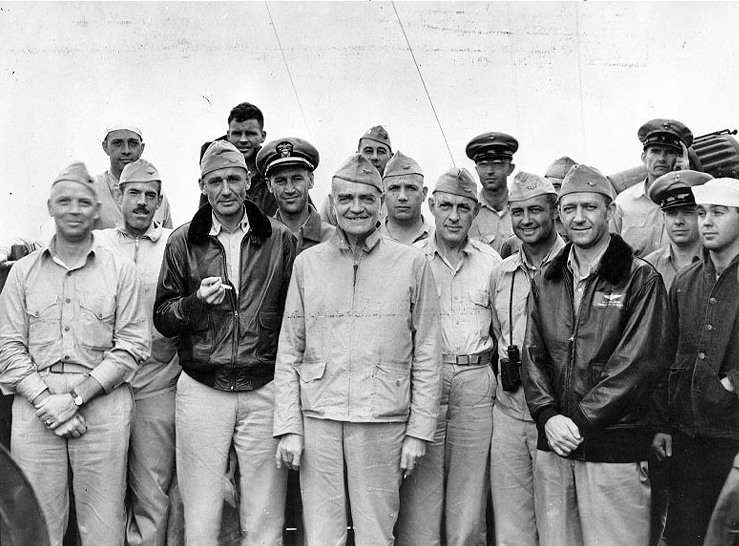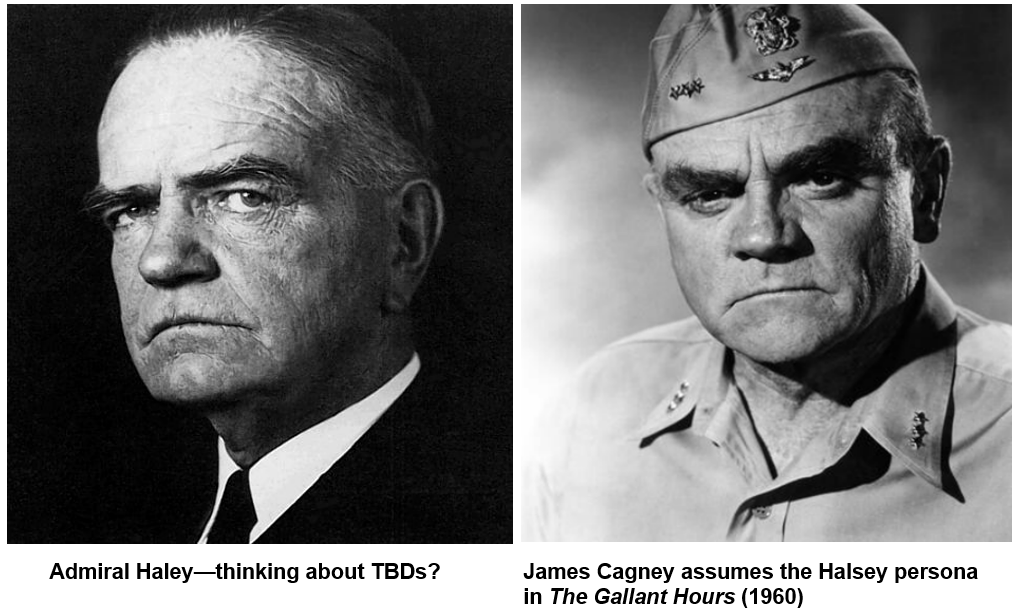____________________
31 July 2022
From: Tom Rychlik
Virginia
Allow me to express my very deep appreciation for all your efforts to answer my question on the TBDs. One of my premises was that from ensigns and young enlisted aircrew to vice admirals, many had concerns about the TBD/Mk13 weapon system even though they had gotten lucky at Coral Sea. This concern should have led senior aviation leadership to put in place some better measures to compensate.
Waldron knew it was going to be tough and fought hard and often for close fighter escort. Yet when it came time to depart the HAG, he still went off on his own. His last letter to Adelaide said he knew they needed a break and that he hoped they would get one. What courage!
Buckmaster’s after-action report [AAR] on Coral Sea said it was essential that the bombers have fighter escort (multiple times) and that the dive bombing attack should start just before and continue through the torpedo attack. It’s interesting he actually achieved that at Midway, but Massey saw he wasn’t needed on
Soryu and decided to attack
Hiryu, even though it meant a longer approach and he was getting ripped to shreds by the fighters.
Buckmaster had almost lost
Yorktown at Coral Sea so he decided not to increase the number of escort fighters but Leslie knew the fighters they had should go with Massey. Massey went to bed with a bottle of Scotch the night before the battle telling the others in his impromptu get-together he didn’t know how they would ever make it back.
In my opinion, Browning sealed VT-6’s death warrants when he launched the dive bombers first and then couldn’t/didn’t stop Spruance from sending them off without the TBDs. My research on the EAG doesn’t seem to indicate much joint discussion among McClusky, Murray, Gray, Lindsey, Best, or Gallaher on planning the strike. With Lindsey spending most of his time in sickbay, it fell to Ely to arrange for the “Come on down, Jim” plan for the fighters.

Admiral Halsey and members of his staff. Captain Browning is at Halsey’s right.
Folks have tried to compare combat experience between the
Yorktown and
Enterprise air groups and air operations [leadership]. Although being at Coral Sea was a benefit to
Yorktown, Enterprise had conducted enough air operations by this point in the war that the difference should have been much less. It’s sad to think that
Yorktown and
Lexington did things early in the war that worked well and yet those concepts didn’t influence
Enterprise and
Hornet at Midway. Was that hubris or ignorance on the part of those leaders? Either or both speaks volumes about certain high ranking officers.
It’s interesting that, even though he was overall in charge of both TF-17 and -16, Fletcher’s AAR was only two pages long compared to Spruance’s five. Since TF-17 was out of play fairly early, that’s understandable, yet he makes no recommendations on how to improve things.
Unlike Spruance who submitted the
Enterprise and
Hornet AARs as enclosures and referred to them in the text of his report, Fletcher doesn’t include Buckmaster’s or anything else in his report. It’s just the facts as he knew them. No comments on the valor of the torpedo squadrons, awards, or for that matter anyone else? He didn’t speak to how well
Yorktown planned their strike. Nothing. It’s almost like he knew he was headed for obscurity and purposely said as little as possible.
On the matter of Captain Mitscher’s AAR, he included Lieutenant Commander Foster’s report as enclosure I. Unsurprisingly, Foster addresses a lot of things but he does not speak to what happened to the HAG on June 4.
The one thing that my research has brought home to me is how many mistakes people in the pay grades of [captain] and above made at Midway and how often the more junior officers bailed them out by doing something that won the battle and in so doing paid the ultimate sacrifice. I think Mitscher figured that out after the battle. That’s why he recommended everyone in VT-8 for the Medal of Honor and was so bothered when they didn’t even give it to Waldron.
____________________
1 August 2022
From: Warren Heller
North Carolina
Following are some thoughts that may help reconcile Dusty Kleiss’ recollections of Halsey’s antipathy toward the TBD/Mk13s and, by the eve of BOM, the senior air staff’s knowledge of the ineffectiveness of that weapon system.
On the way out to Point Luck, top brass aboard ship surely held lengthy discussions about the superior force they would likely be facing. They knew that they could be against six or more carriers (which would have been the case had the IJN planners kept focus on their primary strategic mission – destroy U.S. carrier assets in the Pacific and force us to sue for peace on their terms). Our commanders also understood both the strategic and enough of the tactical situation to know that their possible surprise advantage would be fleeting; there would likely be a single opportunity to launch before coming under attack themselves.
In that verge of BOM environment, it is easy to imagine Browning, Fletcher, Spruance—or Halsey, had he been there—along with the rest of the air staff agreeing that, while the TBDs were essentially “Hail Mary” passes, they might luck out and the hope that a few could make it through to the enemy carriers would be realized.

One can even imagine the voice of Halsey, when reminded of his earlier dictum that no torpedo laden TBDs should ever leave the hangar deck: Goddammit, I wouldn’t care if those #*x^! TBDs were Wright fliers equipped with bows and arrows; we need to hit the #*x^! Japs with everything we got! Those #*x^!TBDs will do a helluva lot more good in action than at the sea bottom after the enemy sinks us!”
The eve of BOM was truly a desperate time for our fleet leaders; regardless of prior opinions, even vehemently expressed ones. Desperate men take desperate measures when backed into a corner.
____________________
Thanks to Tom and Warren for adding to the Halsey-TBD discussion. Warren’s colorful speculation on Halsey’s actual feelings on the matter is consistent with our summation in the July newsletter: given the dire circumstances of the BOM, the TBDs and their unreliable torpedoes were a tactical necessity in spite of their known flaws and Halsey’s previous ranting about them. And as it developed, their absence would arguably have worked against the ultimate success of the dive bombers.
As for Dusty’s preferred tactic of sending every flyable SBD at once against the enemy force spotted by Howard Ady, that simply would never have happened. Remember that Ady had seen only two IJN carriers—at least two more were out there somewhere, and believed to be far removed from those first two. No one, not even Halsey would have launched everything he had against just half of a target when the other half was a fearsome threat, ready to strike from some unknown quarter.